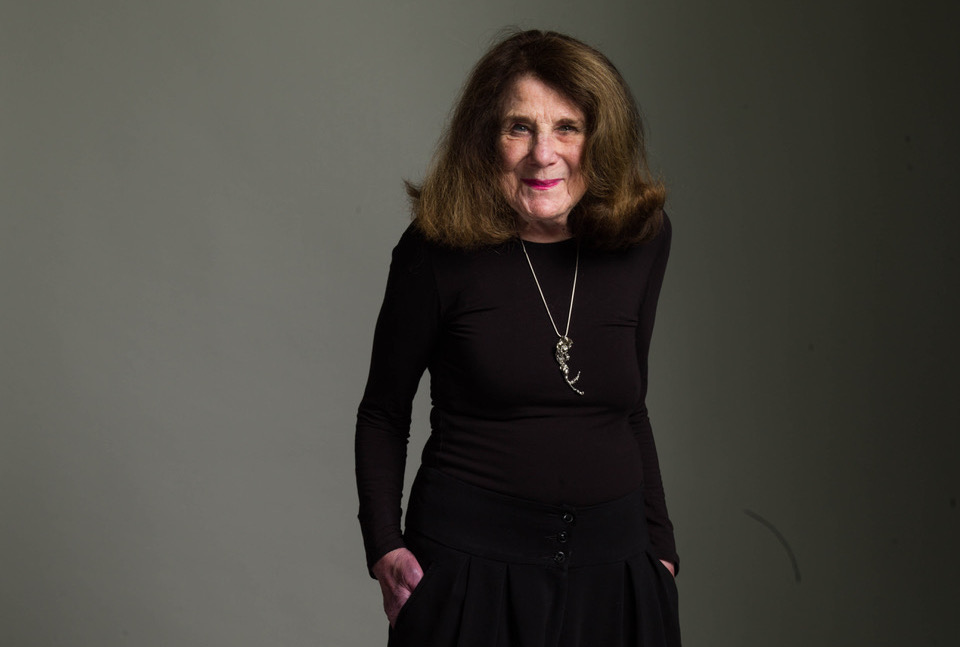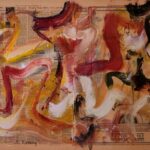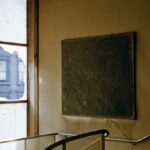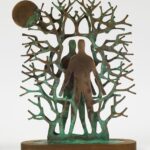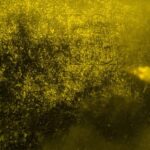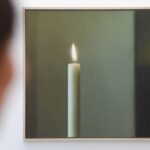Jacqueline de Jong, a Dutch painter who for six decades remained committed to figuration, even when the art establishment did not value it highly, died on Saturday in Amsterdam following a short illness. She was 85.
References: this article is based on content originally published by
Alex Greenberger on ARTnew. You can read the full article here.
“During our time working together, she was a constant source of good humor and cutting brilliance,” wrote her New York gallery, Ortuzar Projects, in its announcement of her passing. “Her spirit and influence will live on through her peers, friends, and family, of which we are honored to be a part.”
References: this article is based on content originally published by
Alex Greenberger on ARTnew. You can read the full article here.
De Jong’s subjects ranged widely, from the covers of French pulp fiction novels to billiards, from the Gulf War of the 1990s to Israel’s current war in Gaza. Across her various bodies of work, she challenged the very basics of her medium, painting on unconventional materials and luring “low” imagery into “high” art.
References: this article is based on content originally published by
Alex Greenberger on ARTnew. You can read the full article here.
For many, her claim to art-historical fame has long been her ties to the Situationist movement, led by a group of leftist artists and writers who were active in 1960s France. Those artists sought to fight the cascade of images that proliferated in the bourgeois mass media; de Jong published some of their writings in the Situationist Times, a short-lived publication that she founded.
References: this article is based on content originally published by
Alex Greenberger on ARTnew. You can read the full article here.
But in the later stages of her life, de Jong preferred to talk less about her Situationist days than what followed. Speaking of her turn toward figuration at a time when abstraction still reigned supreme, she told ARTnews earlier this year, “People like images, and people like to make images. That means artists like to make images. Which means figuration was lacking.”
References: this article is based on content originally published by
Alex Greenberger on ARTnew. You can read the full article here.
Much of de Jong’s art thus placed a focus on figurative imagery, which she seemed to take seriously, even when the work itself was humorous. Sly feminist critique courses through much of her painting, as does a more explicit antiwar sentiment. But de Jong never committed to a single style or subject matter, and that was in some way born of her omnivorous mind.
References: this article is based on content originally published by
Alex Greenberger on ARTnew. You can read the full article here.
Jacqueline de Jong was born in the Dutch town of Enschede in 1939. Her parents collected works by Kurt Schwitters, Diego Rivera, and others, and that instilled in de Jong a fascination with art early on.
References: this article is based on content originally published by
Alex Greenberger on ARTnew. You can read the full article here.
Because her parents were Jewish, she was forced to lead an itinerant childhood, moving between the Netherlands and Switzerland while the threat of the Nazis loomed large. After the war, during the 1950s, she studied theatre at the Guildhall School in London with plans to become an actress. “I absolutely wanted to be on the stage,” she told Frieze in 2017. “Luckily, we can say, I failed.”
References: this article is based on content originally published by
Alex Greenberger on ARTnew. You can read the full article here.
She moved back to Amsterdam and took a part-time job at the Stedelijk Museum, an institution known for its deep holdings of modern art. This put her on the path to becoming an artist—and to meeting Asger Jorn, who cofounded CoBrA, an avant-garde movement that upheld childish, naive painterly techniques as a riposte to accepted artistic standards. The two embarked on a decade-long romantic relationship. De Jong was 19 at the time; Jorn was more than 20 years older than her.
References: this article is based on content originally published by
Alex Greenberger on ARTnew. You can read the full article here.
Jorn’s artistic network was rich and extensive, and helped put de Jong in contact with Guy Debord, a founding member of the Situationist International. “What I was interested in, quite simply, was changing the world,” de Jong told Frieze of her involvement with the Situationists.
References: this article is based on content originally published by
Alex Greenberger on ARTnew. You can read the full article here.
The artist, who was by then based in Paris, parted ways with the Situationists amid an internal dispute between warring factions within the movement. Technically, her founding of the Situationist Times was a response to being ejected from its ranks. But the publication lasted only a few issues because de Jong ran out of money to continue printing it.
References: this article is based on content originally published by
Alex Greenberger on ARTnew. You can read the full article here.
De Jong’s painterly at the style at the time was CoBrA-like, with paintings cramped with toothy, monstrous figures jostling in space. But by the end of the decade, her figures became more clearly defined, and she began referring to things seen in mass media, from dinosaurs to astronauts. Her rejection of abstraction should have aligned her with Narrative Figuration, a French movement that placed an emphasis on allegory, but de Jong felt they did not accept her, since she was a woman. Besides, she was more interested in artists like Peter Saul, an American artist whose crass paintings have been related to the Pop movement.
References: this article is based on content originally published by
Alex Greenberger on ARTnew. You can read the full article here.
Having participated in leftist movements around the time of the May ’68 protests, de Jong would go on to move to Amsterdam during the 1970s. While she had already experimented with multipart paintings by then, she continued to push that mode even further, creating a series of works that could even be folded up and toted around à la a suitcase. Later on, she would test the medium even more when she painted onto long stretches of sailcloth, showing that the traditional oil-on-canvas format was effectively a thing of the past.
References: this article is based on content originally published by
Alex Greenberger on ARTnew. You can read the full article here.
While de Jong is highly regarded within the Netherlands, with some of her paintings currently on view at the Rijksmuseum, she has only recently begun to receive fame abroad. In 2018, Les Abattoirs in Toulouse, France, gave her a retrospective; another followed in 2020 at the Stedelijk Museum, and yet another followed in 2021 at the WIELS Contemporary Art Centre in Brussels. A survey of her work will appear this year at the NSU Art Museum in Fort Lauderdale, Florida.
References: this article is based on content originally published by
Alex Greenberger on ARTnew. You can read the full article here.
Yet even in her final years, de Jong seemed unfazed by the renown her art had finally received. As she told ARTnews earlier this year, “Painting is always out of style.”
References: this article is based on content originally published by
Alex Greenberger on ARTnew. You can read the full article here.
